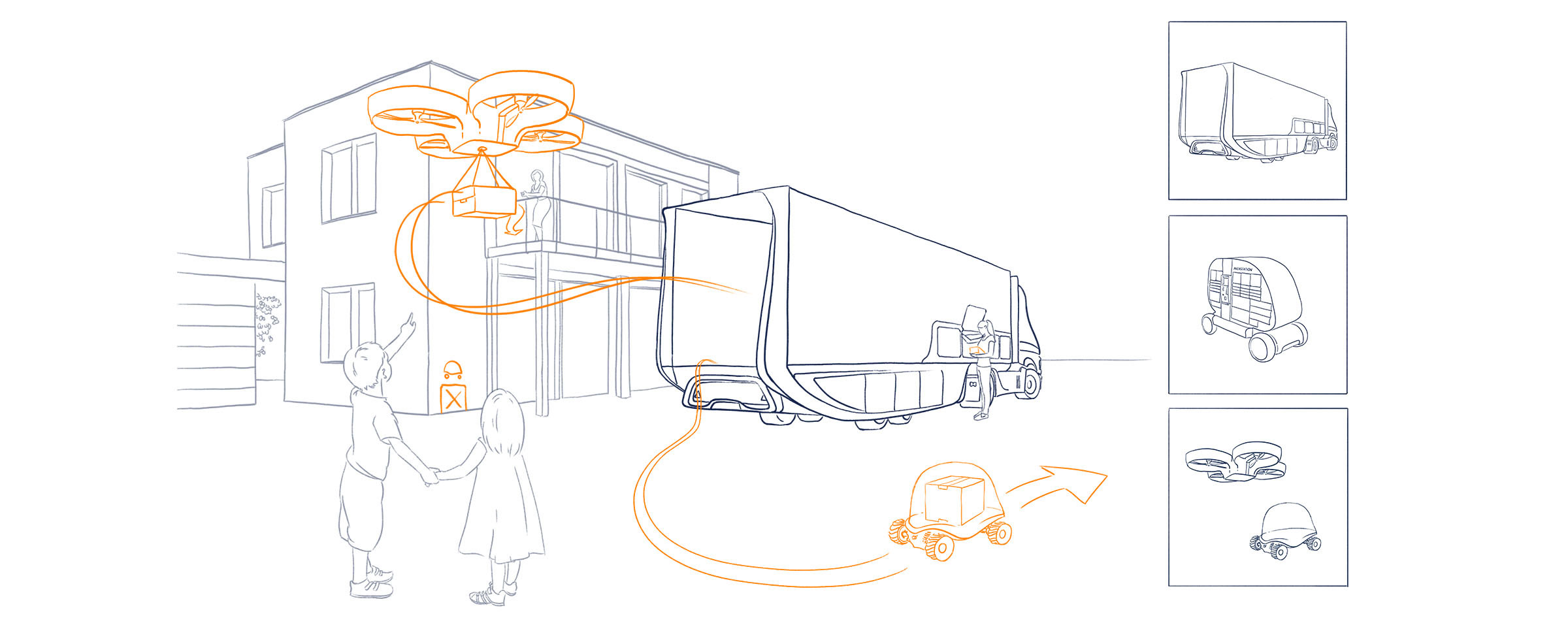
Next Logistics Scenario
The possibilities of IoT and IoS combined with autonomous transport devices will not only automate more but also individualize logistics. The NEXT LOGISTICS scenario impresses with its efficiency and perfect adaptation to the needs of both the sender and recipient.
Thinking of the future of logistics
We consider the future from the perspective of the user as well as the operator of a business system and design pioneering future scenarios: What is possible in the future? How can an existing system be optimized while being expanded with a new value proposition?
In the future: There is hardly a place on earth anymore that is not accessible to technical transport devices. Autonomous trucks, mobile packing stations, robots, flying robots or terrain caterpillars transport goods quickly and reliably even to remote regions, up high staircases or from the mainland to an island. The decisive point however is: The innovative vehicles can coordinate with each other in a split second, recognize the more suitable “colleague” for the respective transport requirement, and automatically implement any special wishes the sender and recipient may have. This makes both new logistics systems and new transport vehicles conceivable. A whole new world of logistics is emerging: NEXT LOGISTICS.
Determine the destination and leave the rest to technology
Trucks drive autonomously into the destination area and transfer the package to a mobile or stationary packing station; mobile packing stations and robots deliver the parcel to almost any location and communicate this to the recipient.
Or: While autonomous logistics vehicles are driving through residential areas, they are unloaded by mini-vehicles, robots or mobile packing stations, which in turn deliver the packages to the appropriate package boxes at the destination or to the recipient.
Or: The transport potential of the empty trunks of intelligent cars is utilized by having the cars report their destination and available space to the intelligent logistics system before starting off an already planned journey (space sharing). This, for example, allows for the virtually CO2 neutral transportation of packages, or for travelers to travel by train without taking their luggage along.
Trunks however offer more than just untapped transport potential. They can also serve as a place to store packages in parked cars: Mobile packing stations and robots can unlock the trunk by code, a gripping arm places the consignment inside, and the trunk is closed again.
The totality alone is the truth
NEXT LOGISTICS impresses with efficiency, flexibility and adaptivity. Intelligently networked, new transport vehicles and robots find the fastest, cheapest and most climate-compatible route for the goods. In other words: The package finds the way on its own, according to the requirements of the sender and recipient. This means, among other things: lower costs, considerably less empty runs, no untraceable packages, less congestion, less warehouses and more convenience. Against the background of increasingly stringent requirements with respect to the CO2 emissions, the path leads towards NEXT LOGISTICS. Only the intelligent networking of autonomous, new and already existing means of transport can bring about a relevant reduction of CO2.